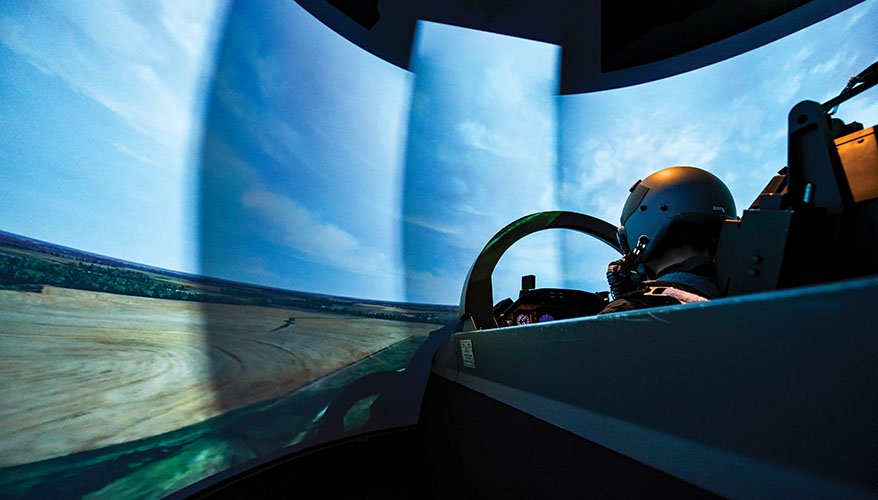Improving Training at NATO a Bureaucracy, not Technology Problem

Abstract:
At the IT2EC conference in Rotterdam, the Alliance agreed that simulators are essential tools in the defense industry for training and testing military personnel and equipment. However, the use of simulators is often siloed, with different branches of the military and defense contractors using their own simulators. This can lead to inefficiencies and inconsistencies. To improve the use of simulators, there needs to be a standardization of simulators, more collaboration between different branches of the military and defense contractors, more investment in simulators, more emphasis on the use of simulators in the procurement process, and more training for personnel on the use of simulators.
Additionally, integration among simulators is an important aspect to consider when improving their usage in the defense industry. By integrating simulators, the defense industry can create more realistic and complex training scenarios, as well as reduce costs.
Simulators as powerful and essential tools
Simulators are essential tools in the defense industry for training and testing military personnel and equipment. However, the use of simulators is often siloed, with different branches of the military and defense contractors using their own simulators. This can lead to inefficiencies and inconsistencies.
To improve the use of simulators, there are several solutions that can be implemented:
First, there needs to be a standardization of simulators across the defense industry. This means that all simulators should be able to communicate with each other and share data. This will allow for more efficient training and testing, as well as better collaboration between different branches of the military and defense contractors.
Second, there needs to be more collaboration between the different branches of the military and defense contractors. This can be achieved through joint training exercises and the sharing of best practices. By working together, the defense industry can improve the use of simulators and ensure that they are being used to their full potential.
Third, there needs to be more investment in simulators. This includes both the development of new simulators and the upgrading of existing ones. By investing in simulators, the defense industry can ensure that they are up-to-date and able to simulate the latest technologies and scenarios.
Fourth, there needs to be more emphasis on the use of simulators in the procurement process. This means that simulators should be considered when evaluating new equipment and technologies. By doing so, the defense industry can ensure that new equipment and technologies are compatible with existing simulators and can be effectively tested and trained on.
Fifth, there needs to be more training for personnel on the use of simulators. This includes both the operators of the simulators and the personnel who will be trained on them. By providing more training, the defense industry can ensure that simulators are being used to their full potential and that personnel are able to effectively train and test on them.
Additionally, integration among simulators is an important aspect to consider when improving the use of simulators in the defense industry. By integrating simulators, the defense industry can create more realistic and complex training scenarios as well as reduce costs.
Bureaucracy Dilemma
Bureaucracy can be a challenge when implementing solutions to improve the use of simulators in the defense industry, especially when dealing with the 31 NATO nations. This aspect has been extensively discussed during the last IT2EC conference in Rotterdam.
To overcome this challenge, there needs to be a coordinated effort among the NATO nations to standardize simulators and improve collaboration. This can be achieved through the establishment of a NATO-wide standardization program for simulators, which would ensure that all simulators used by NATO nations are compatible and can communicate with each other. Additionally, joint training exercises and the sharing of best practices can help improve collaboration among NATO nations.
Furthermore, there needs to be a focus on the benefits of investing in simulators and improving their use. By highlighting the cost savings and improved training and testing capabilities that simulators can provide, NATO nations can be encouraged to invest in simulators and work together to improve their use.
In conclusion, bureaucracy can be a challenge when implementing solutions to improve the use of simulators in the defense industry, especially when dealing with the 31 NATO nations. To overcome this challenge, there needs to be a coordinated effort among NATO nations to standardize simulators, improve collaboration, and focus on the benefits of investing in simulators. By doing so, the defense industry can improve the use of simulators and ensure that they are being used to their full potential.
Consideration
In conclusion, Bureaucracy can be a challenge when implementing solutions to improve the use of simulators in the defense industry, especially when dealing with the 31 NATO nations. To overcome this challenge, there needs to be a coordinated effort among NATO nations to standardize simulators, improve collaboration, and focus on the benefits of investing in simulators. By doing so, the defense industry can improve the use of simulators and ensure that they are being used to their full potential.
The use of simulators in the defense industry is crucial for training and testing. However, the use of simulators is often siloed, which can lead to inefficiencies and inconsistencies. To improve the use of simulators, there needs to be a standardization of simulators, more collaboration between different branches of the military and defense contractors, more investment in simulators, more emphasis on the use of simulators in the procurement process, and more training for personnel on the use of simulators. Additionally, integration among simulators is an important aspect to consider when improving the use of simulators in the defense industry. By implementing these solutions, the defense industry can improve the use of simulators and ensure that they are being used to their full potential.
Written by Cdr Dino Tropea NATO M&S COE
Source: https://www.nationaldefensemagazine.org/articles/2023/5/19/siloed–simulators


 NATO
NATO